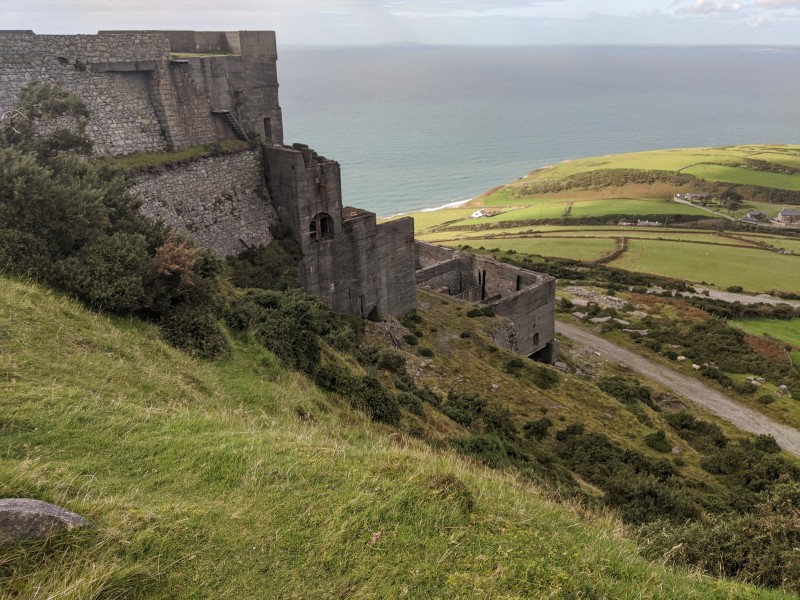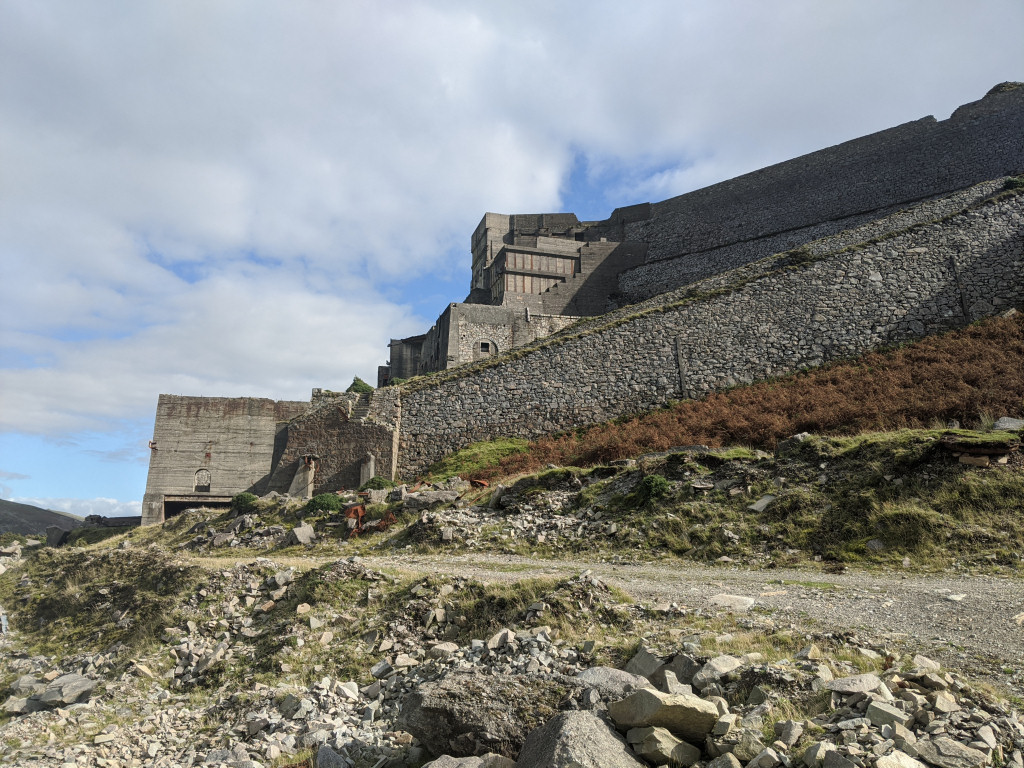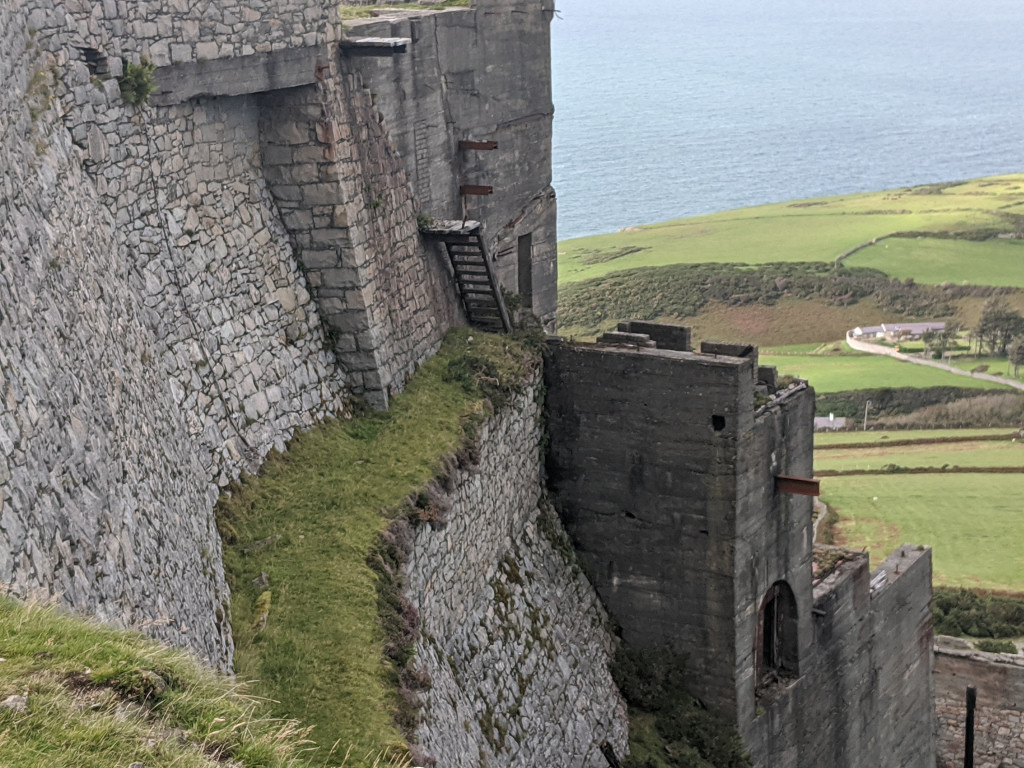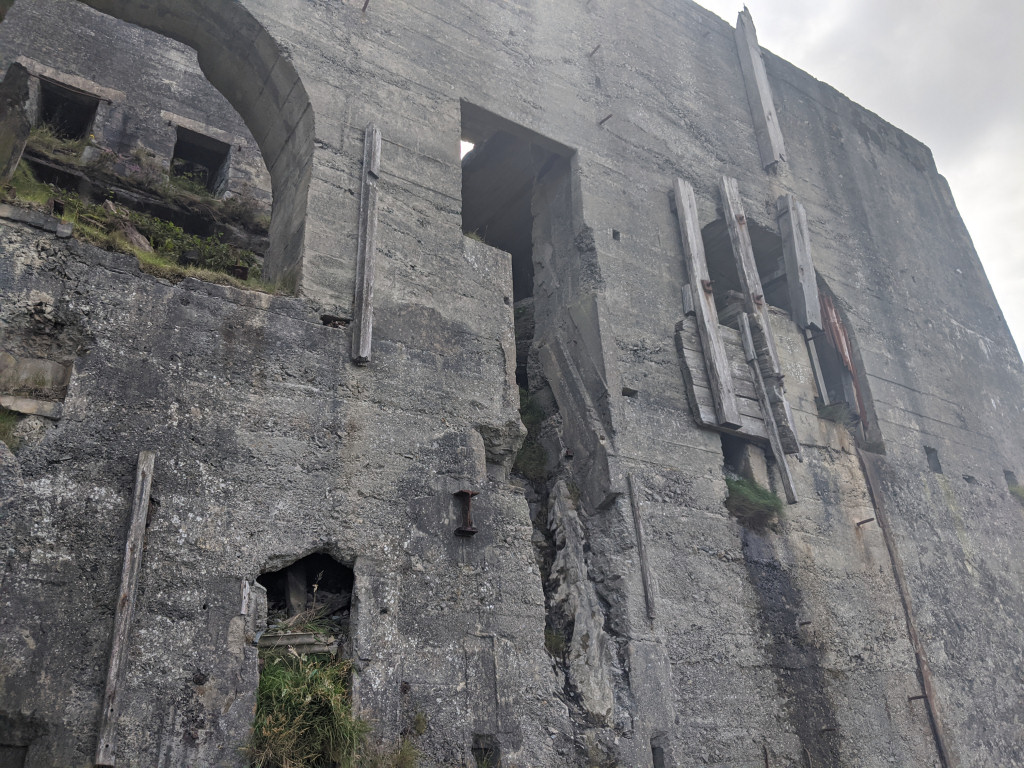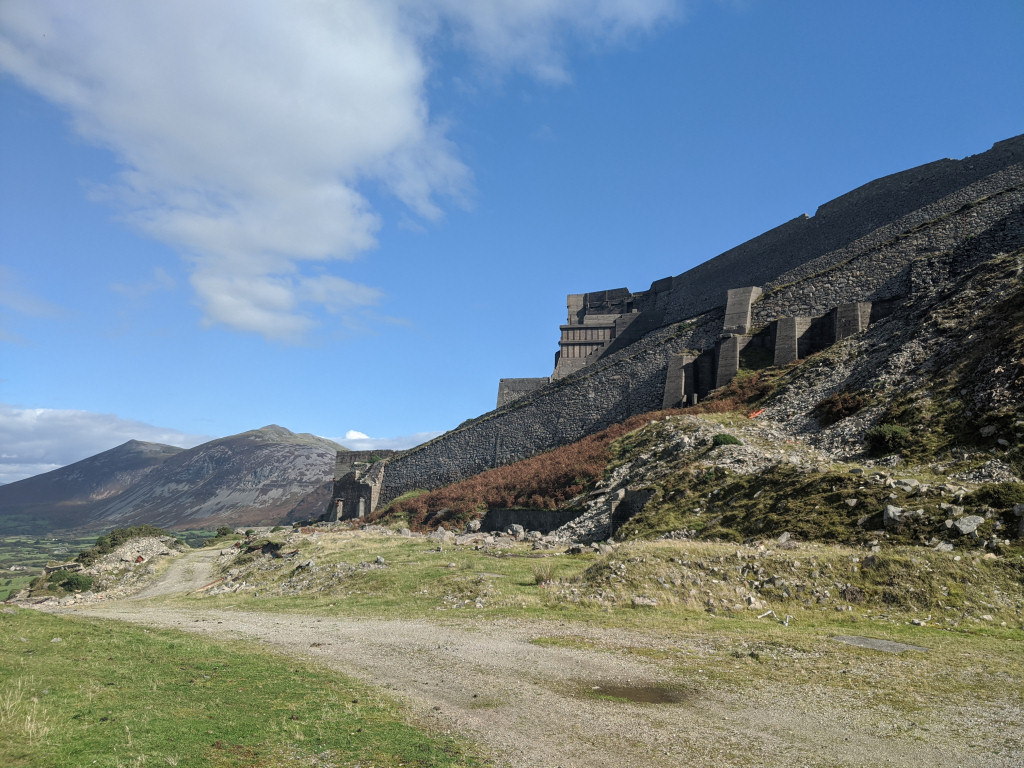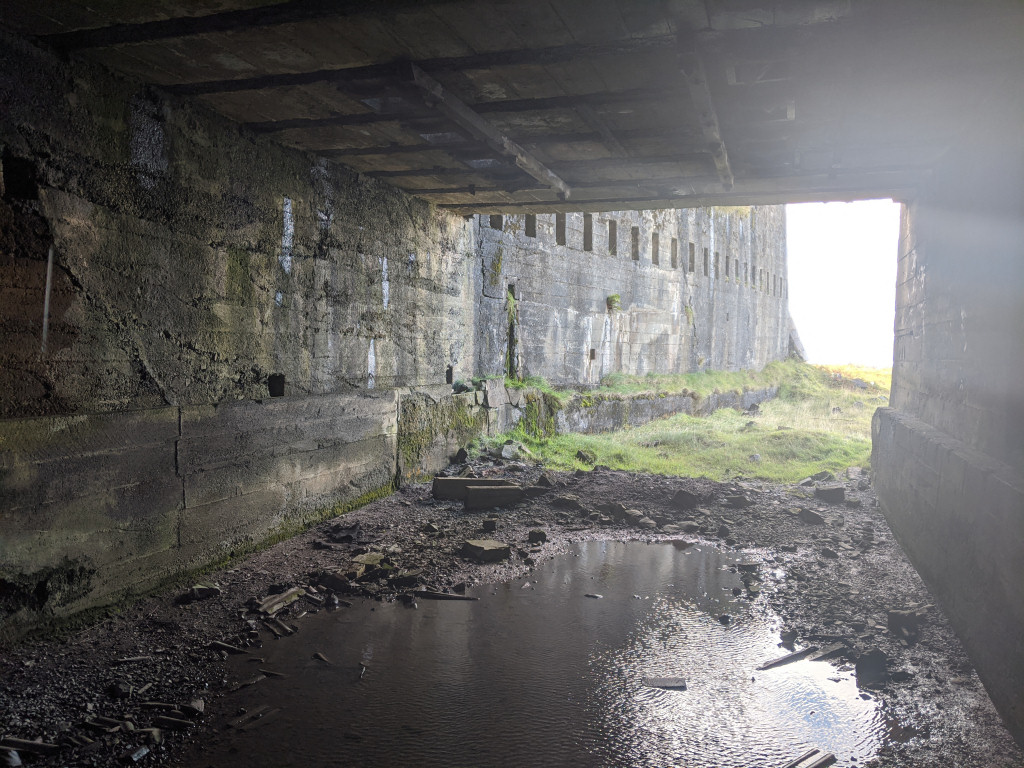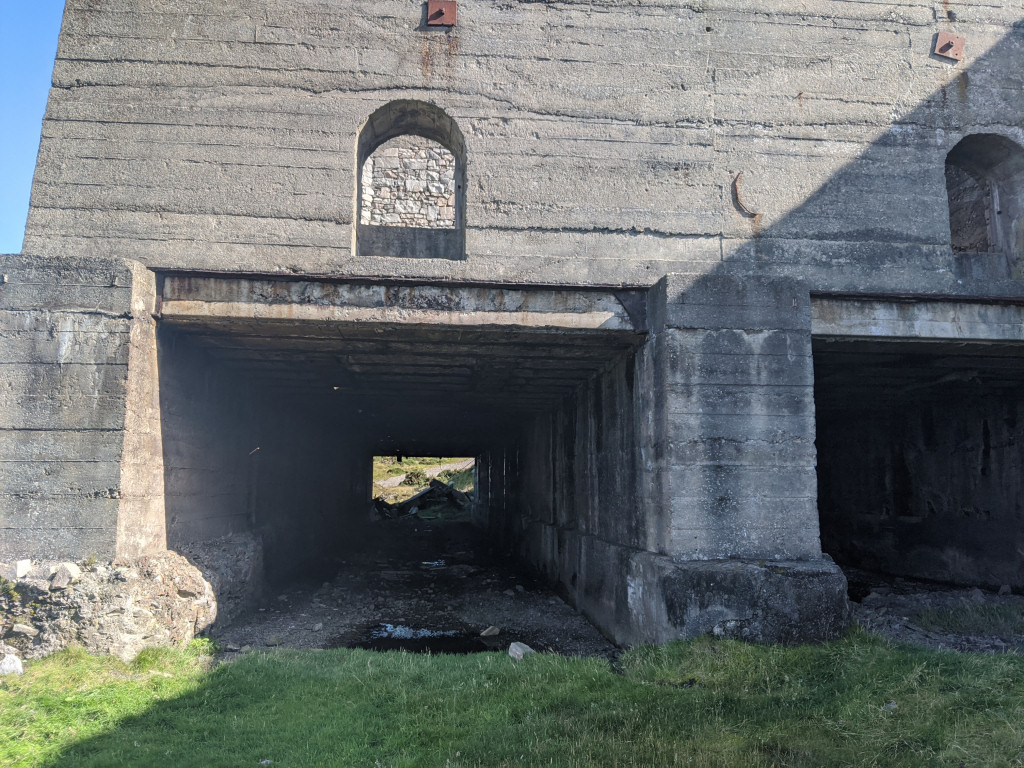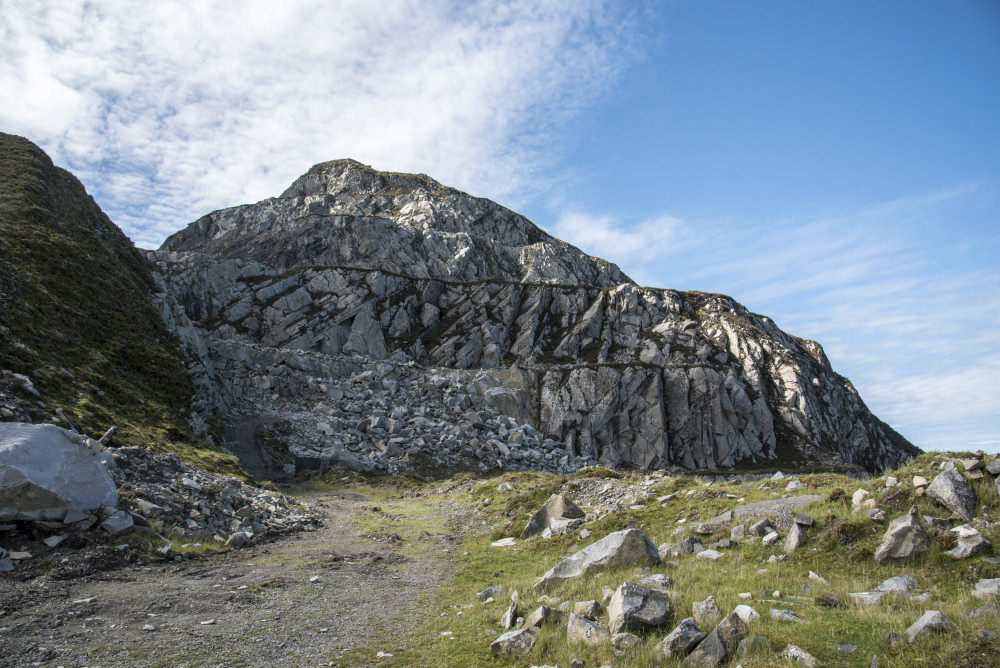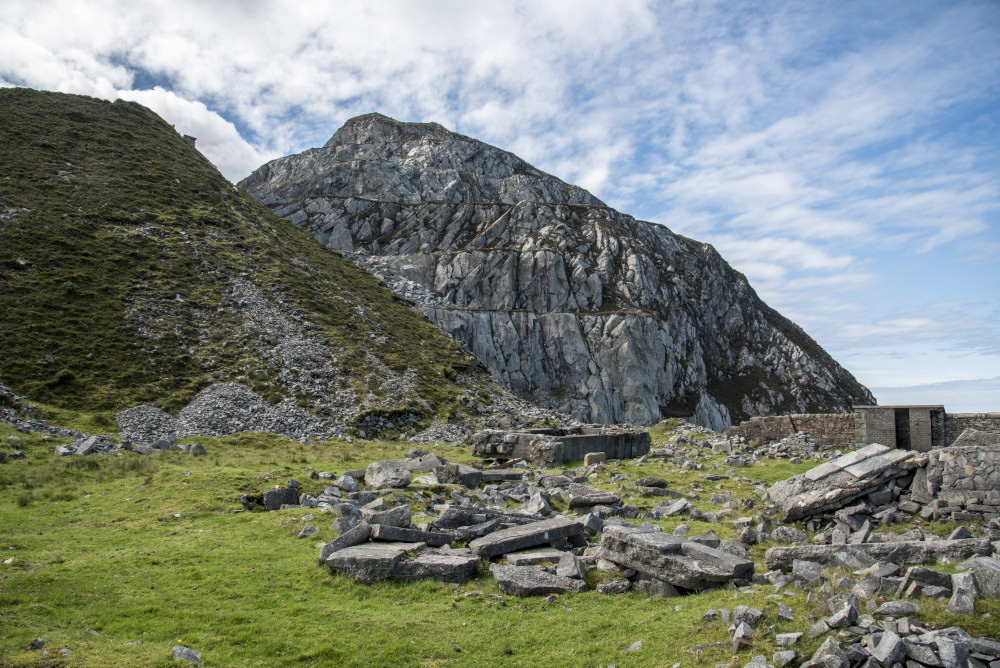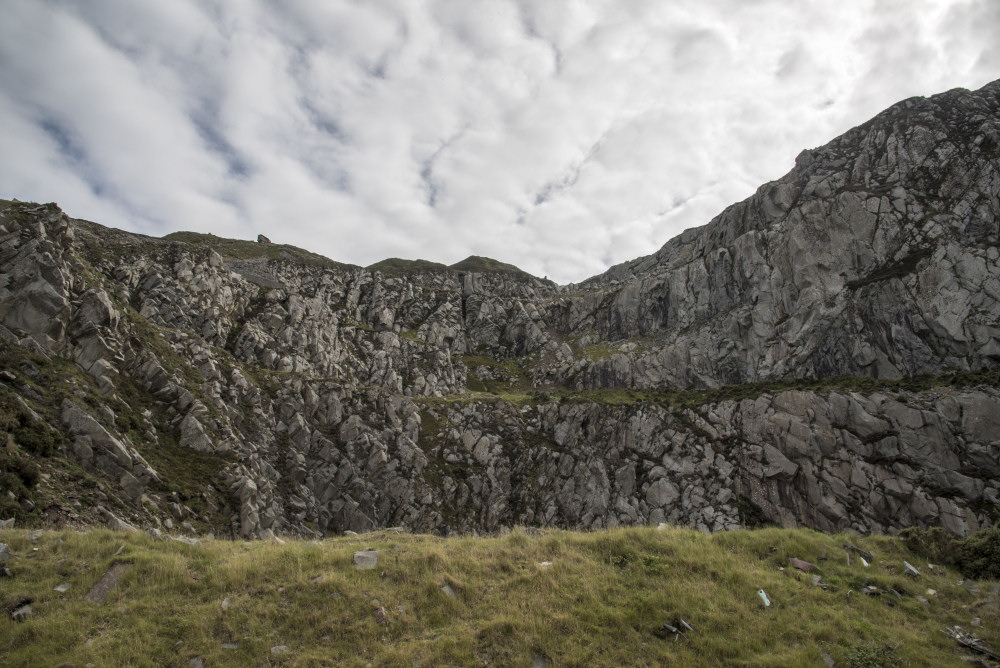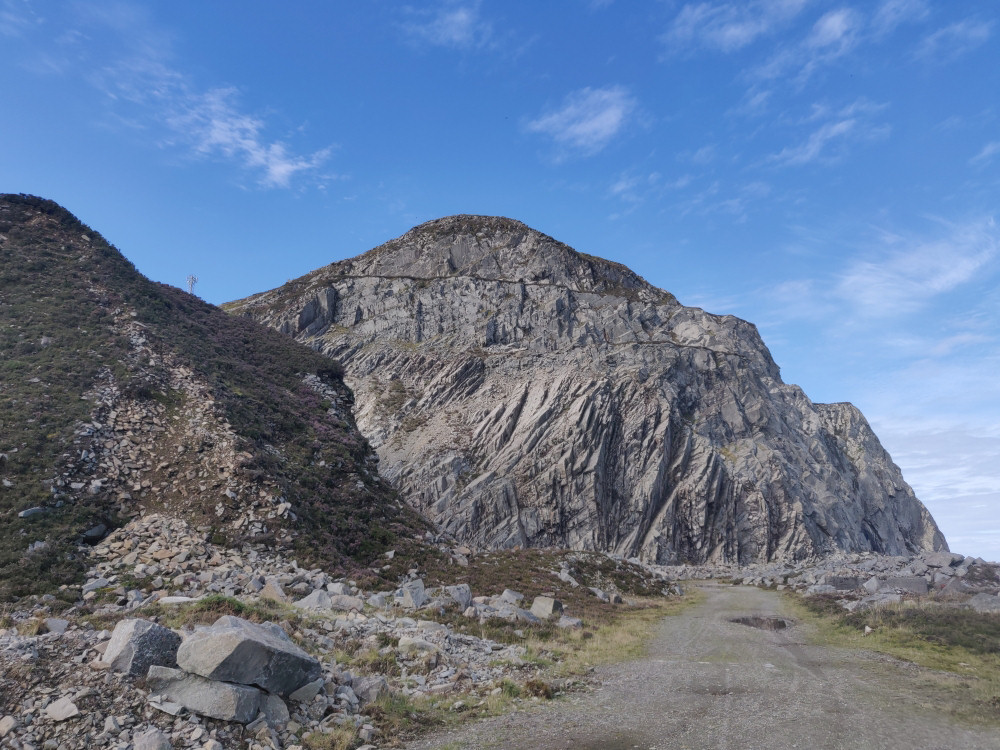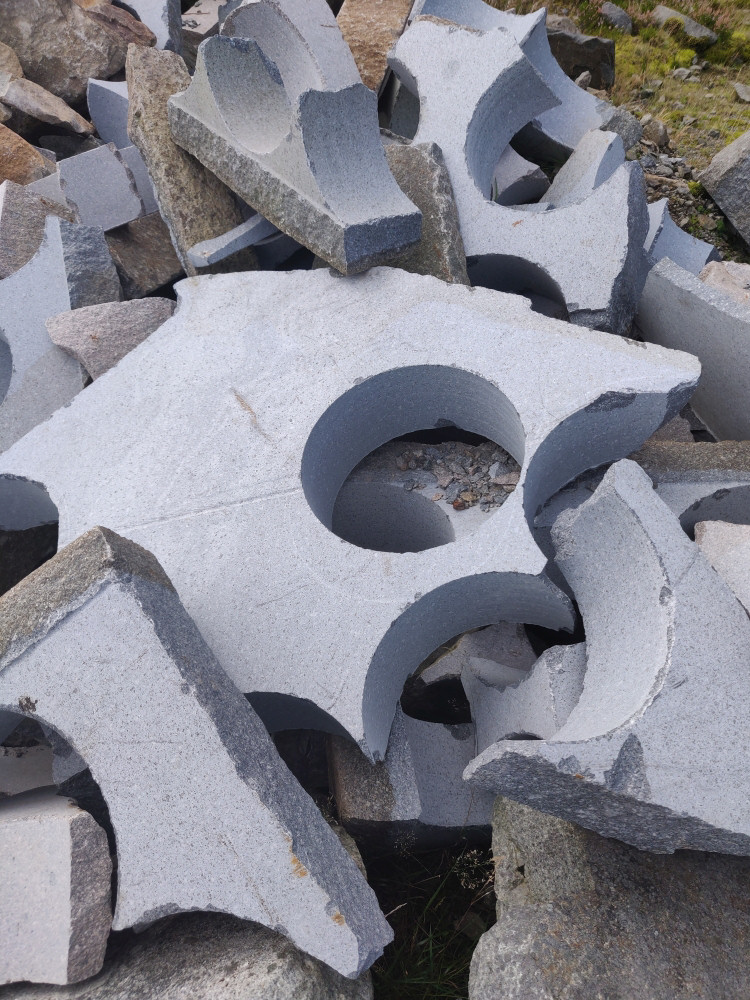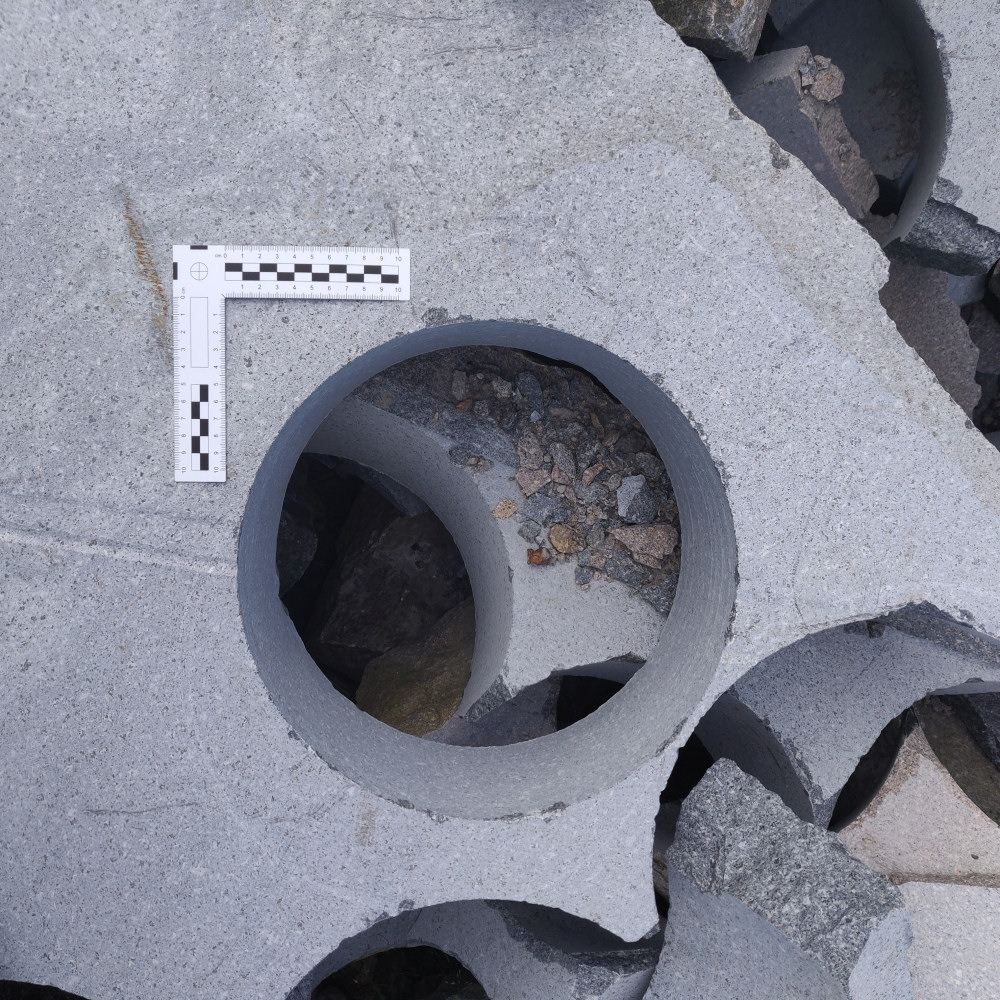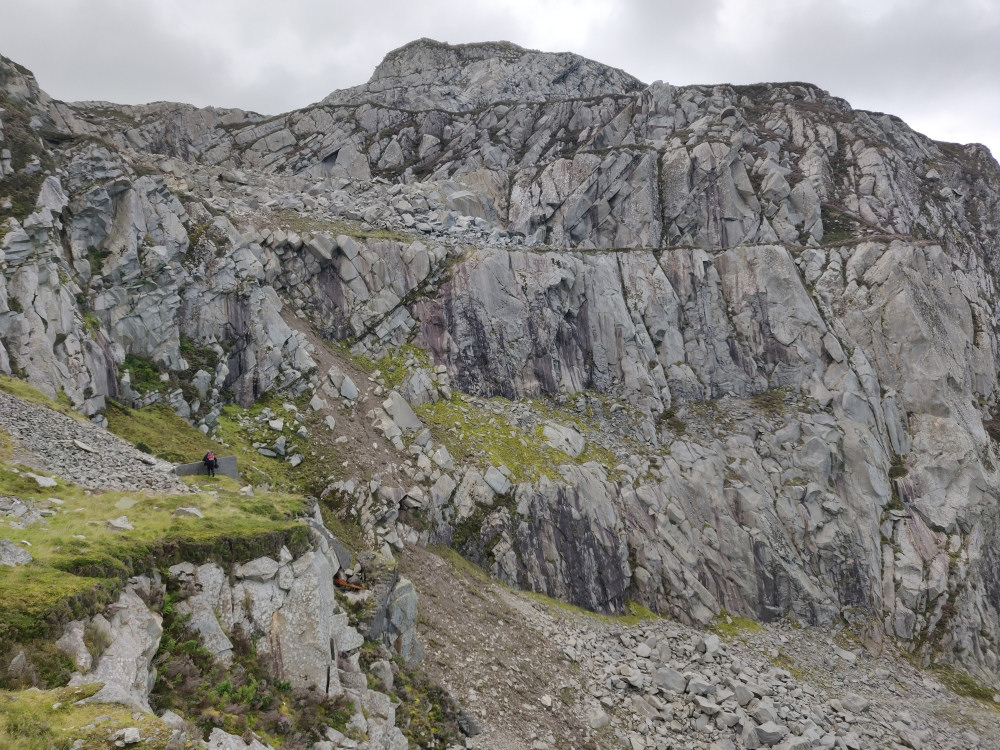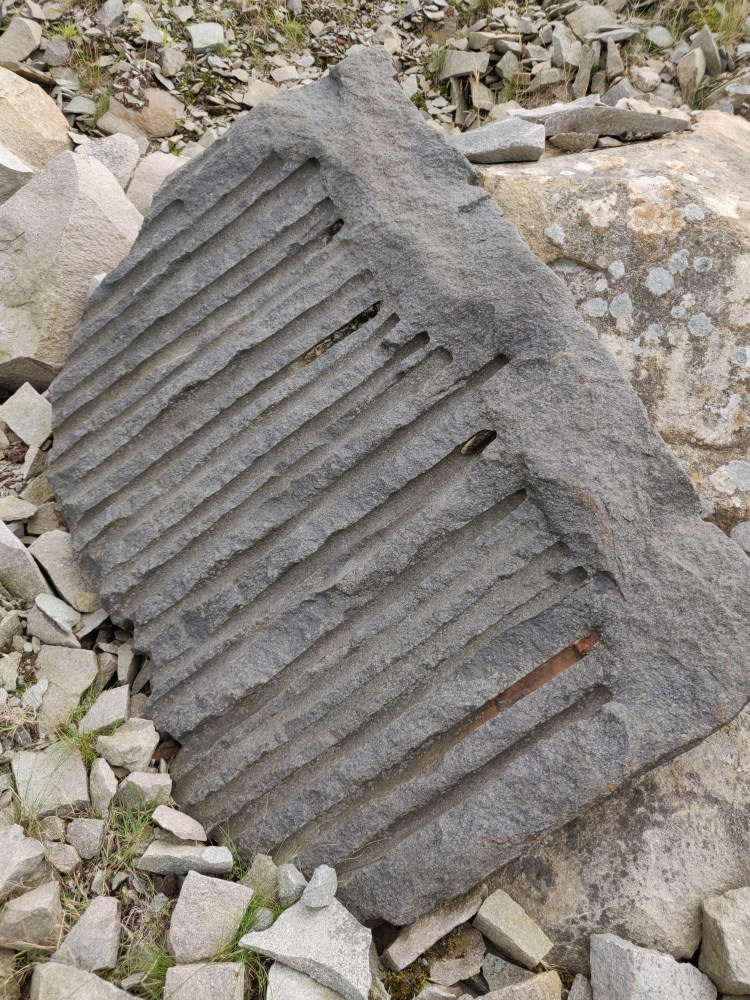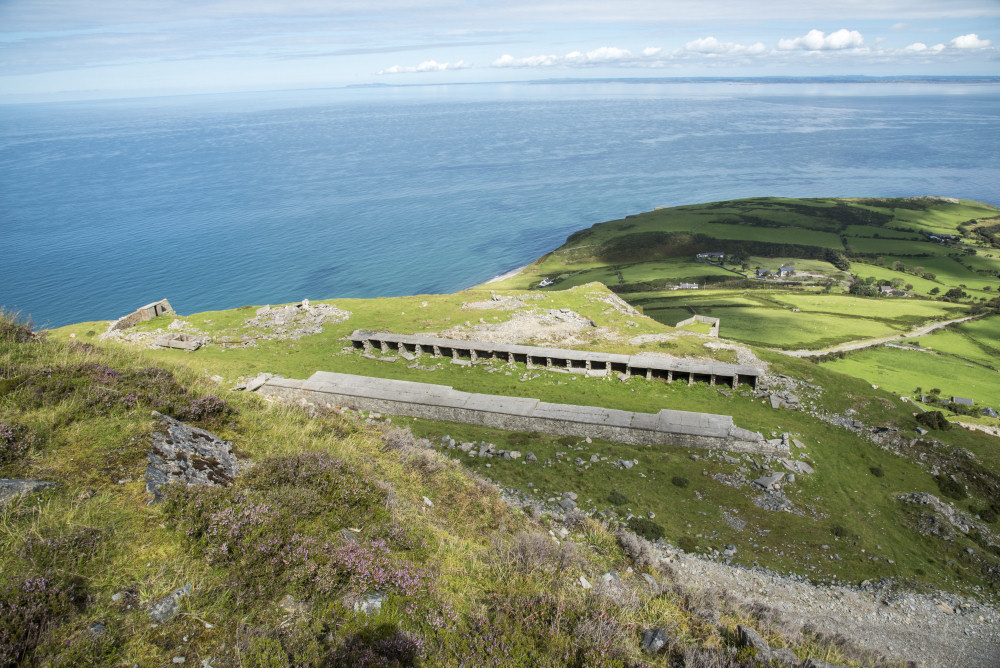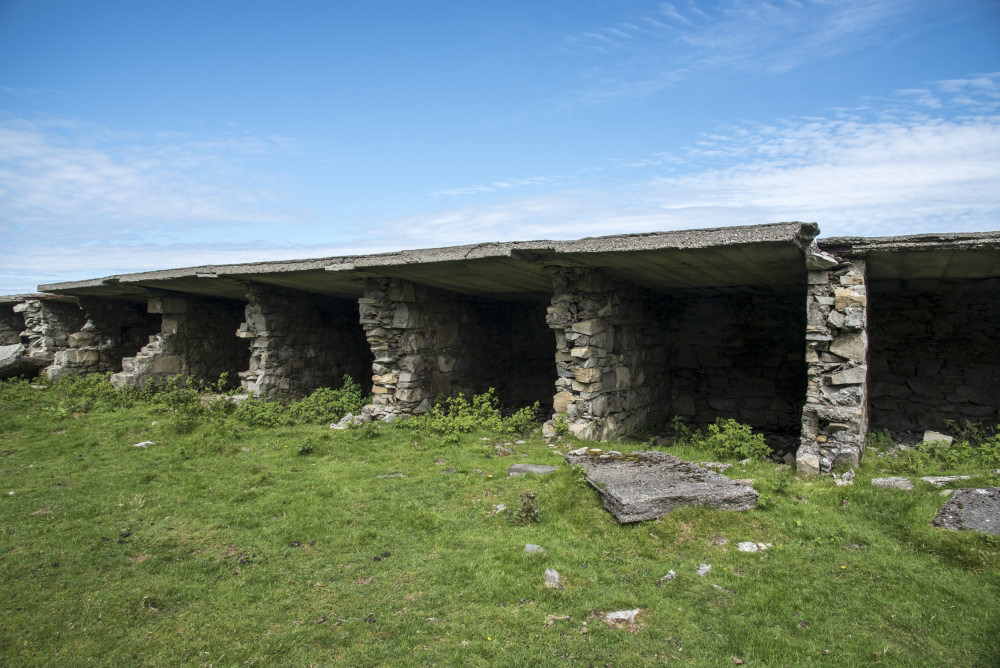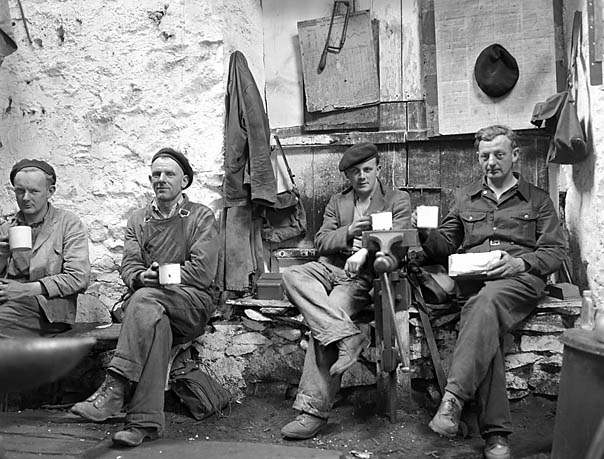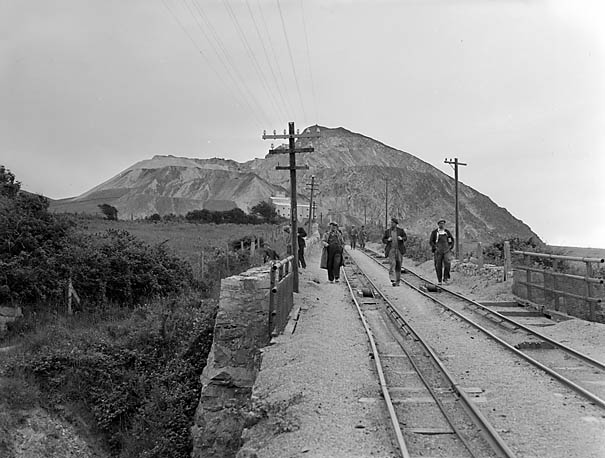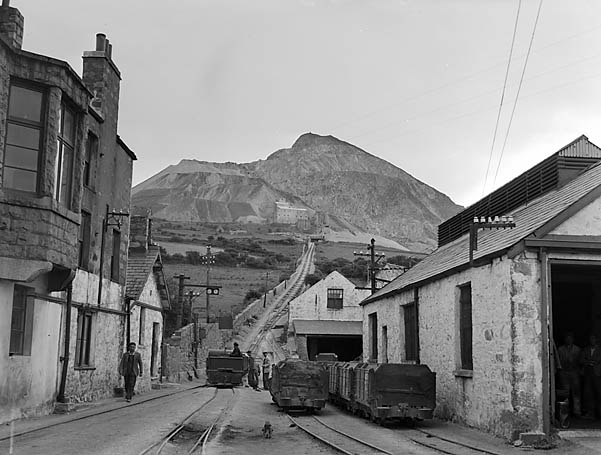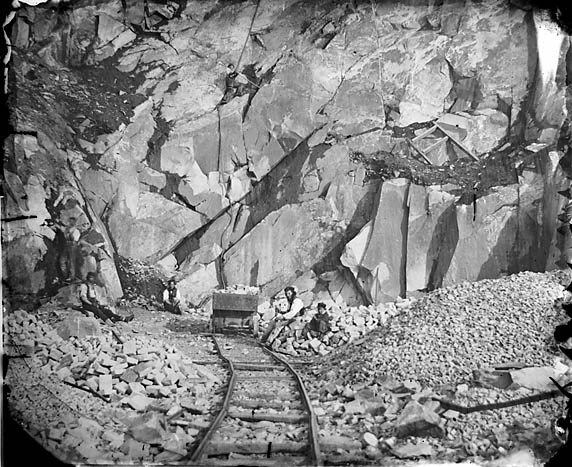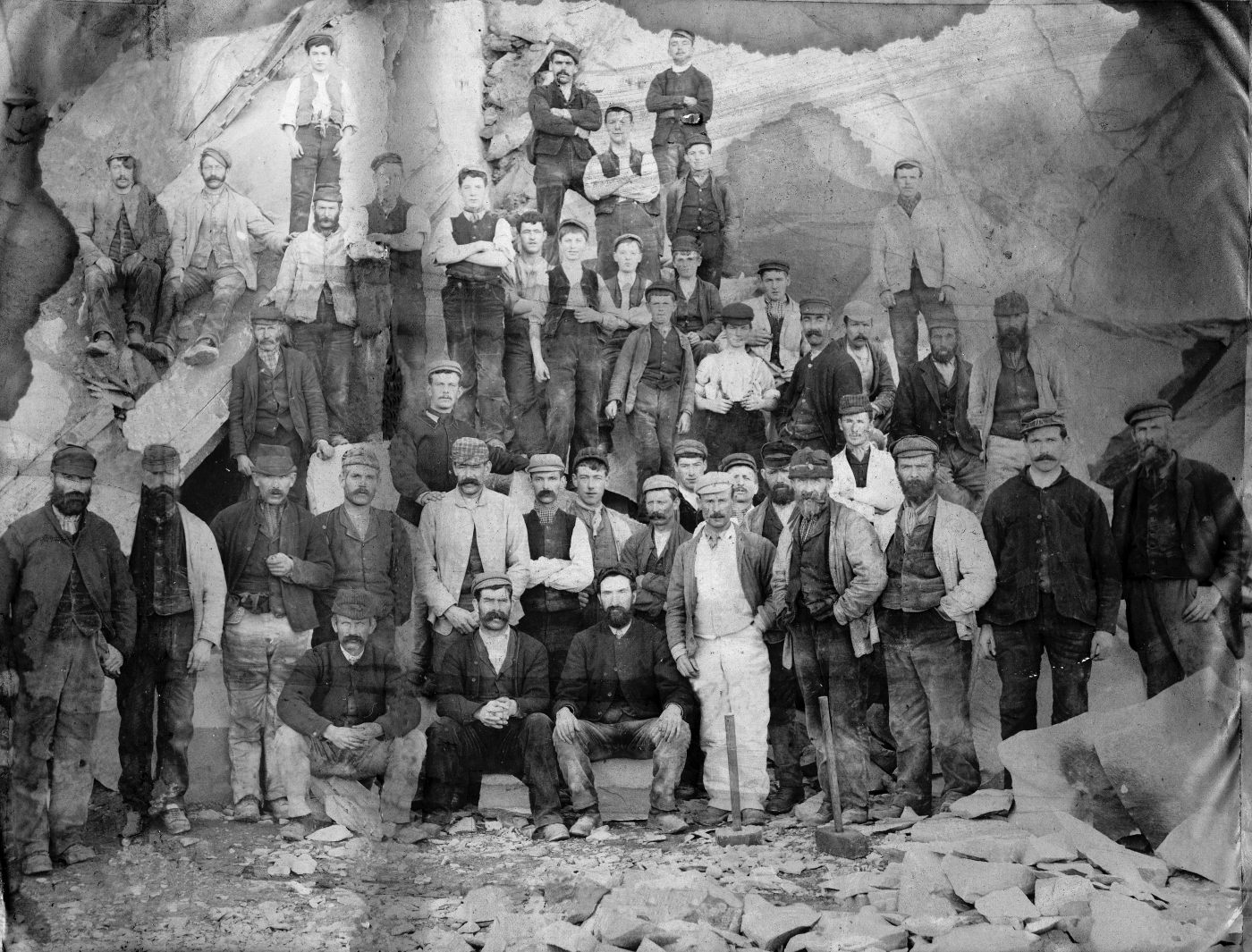Today, the site still contains the remains of the rail-served galleries, workshops, and other infrastructure, including the tramway incline and associated buildings. The section of tramway between the foot of the incline and the pier was once worked by steam locomotives.
The Trevor Quarry, covering approximately a quarter of a square kilometer, was named after its first foreman, Trevor Jones. The quarry began operations in 1850 and continued until its closure in 1963. During its time in operation, the site featured an extensive network of rail-served galleries, workshops, inclines, a magazine, bins, and a crusher house. A notable feature of the quarry was the 920-meter-long tramway incline, which had a gauge of 600mm (1ft 11 1/2in) and a gradient of 1 in 1.75. The tramway continued level past additional workshops, offices, and the village of Trevor, which was served by a siding. The tramway terminated at Trevor Pier. The quarry’s main product was granite setts, which were shipped to Liverpool and other cities for use in paving.
External Links
